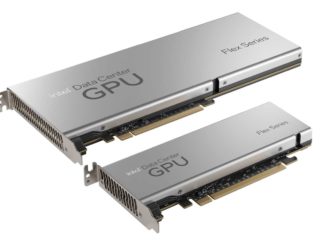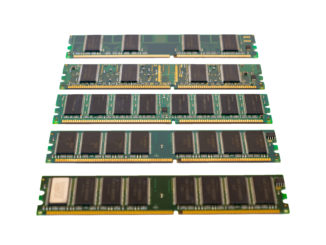
It is not difficult to oversimplify, even with something as complex and diverse as quantum computing, but these systems go far beyond mere qubits in deep freeze. Just like any computer, these machines have complicated control hardware and code in addition to the overall architectural and algorithmic features. With that in mind, it is also easy to overlook the importance of what sounds like a small addition, a device for quantum control, but this is actually game-changing for the nascent field.
Here’s a test of that oversimplification theory. Imagine a quantum computer. Chances are you see the massive refrigeration unit with its gold or copper wiring leading to and from the inside. But what is often not pictured are the many racks of discrete electronic boxes just outside of view. These are controlling the qubits and while it looks like a lot of gear now, recall that it is all in place simply to act as chief puppeteer of between ten to fifty qubits.
Real quantum computing, which means at enough scale and level connectedness to solve truly meaningful and broader problems, will take thousands of connected qubits. While efficiency is a main attractor of quantum computers (take issue with that if you will), that is going to require an incredible amount of traditional hardware humming away in the background.
This is why efficient, scalable quantum control hardware is key. Without it quantum computing will be stuck in its current qubit-limited state. As it turns out, however, building such hardware is no simple task. The temperature issue is one complicating factor and the complexity of algorithmic design is another entirely.
Intel thinks it might have a big role to play in the future of quantum computing in this behind-the-scenes arena of the quantum innovation race. As Jim Clarke, Director of Quantum Hardware at Intel Labs tells The Next Platform. “We think this is going to be needed as simplified qubit systems begin to scale, so this is a unique advantage for us at Intel.”
Clark says Moore’s Law is driving conversations about the need for a race to quantum and on Intel’s side, it’s actually helpful. “When it comes to Moore’s Law we have a long runway of technologies. But more important, quantum computing will rely on the technical advances of Moore’s Law for many years to come. First we need the technologies to improve qubits and second, this all still requires classical computers and microprocessors. A quantum computer is not just a quantum processor but a host of classical chips doing control and operation as part of the essential feedback loop.”
In that vein, Intel has announced just the device for controlling qubits. Today at the International Solid State Circuits Conference (ISSCC) the chip giant announced that its work with QuTech, a quantum computing research collaborative founded at the Delft University of Technology and the Netherlands Organisation for Applied Scientific Research, has yielded a new cryogenic control chip called “Horse Ridge” to target quantum scalability, fidelity, and flexibility.
Intel has built a specialized processor based on their 22nm FINFET technology that has been optimized to run at the very cold temperatures of the dilution fridges used for quantum computers. It is a control chip that can, using low power RF microwave pulses can operate at ultra-cold temperatures to control qubits. It has also been optimized to control many channels despite its small size while maintaining a wide operating range and at very low power, which is critical.
“You want to have some scalable control for many, many qubits and you want it as close to the unit as possible to reduce the number and complexity of the wires. We’ve proven that you can develop a chip that’s optimized to run at 4 Kelvin (four degrees above absolute zero) and control individual qubits in the same fridge. So it’s circuit optimization for RF, it’s optimized for many channels (thus good for scaling) and we can control individual qubits for match fidelity.”
Scalability: The integrated SoC design, implemented using Intel’s 22nm FINFET technology, integrates four radiofrequency (RF) channels into a single device. Each channel is able to control up to 32 qubits leveraging “frequency multiplexing” — a technique that divides the total bandwidth available into a series of non-overlapping frequency bands, each of which is used to carry a separate signal.
Fidelity: Increases in qubit count trigger other issues that challenge the capacity and operation of the quantum system. One such potential impact is a decline in qubit fidelity and performance. In developing Horse Ridge, Intel optimized the multiplexing technology that enables the system to scale and reduce errors from “phase shift”- a phenomenon which can occur when controlling many qubits at different frequencies, resulting in crosstalk among qubits.
Flexibility: Horse Ridge can cover a wide frequency range, enabling control of both superconducting qubits (known as transmons) and spin qubits. Transmons typically operate around 6-7GHz, while spin qubits operate around 13-20GHz.
Clarke says the interest in the Horse Ridge quantum control chip has been strong in the broader quantum community because the circuit has been low-temperature optimized, which makes it agnostic in the sense that it can fit in any low-temp setup and eliminate the sea of wires and complex bit of electronic underpinnings that would otherwise scale with the number of qubits, making quantum goals like error correction, for instance, even messier.
For more technical background seek out “A Scalable Cryo-CMOS 2-to-20GHz Digitally Intensive Controller for 4×32 Frequency Multiplexed Spin Qubits/Transmons in 22nm FinFET Technology for Quantum Computers” which will be live later this week.





Be the first to comment